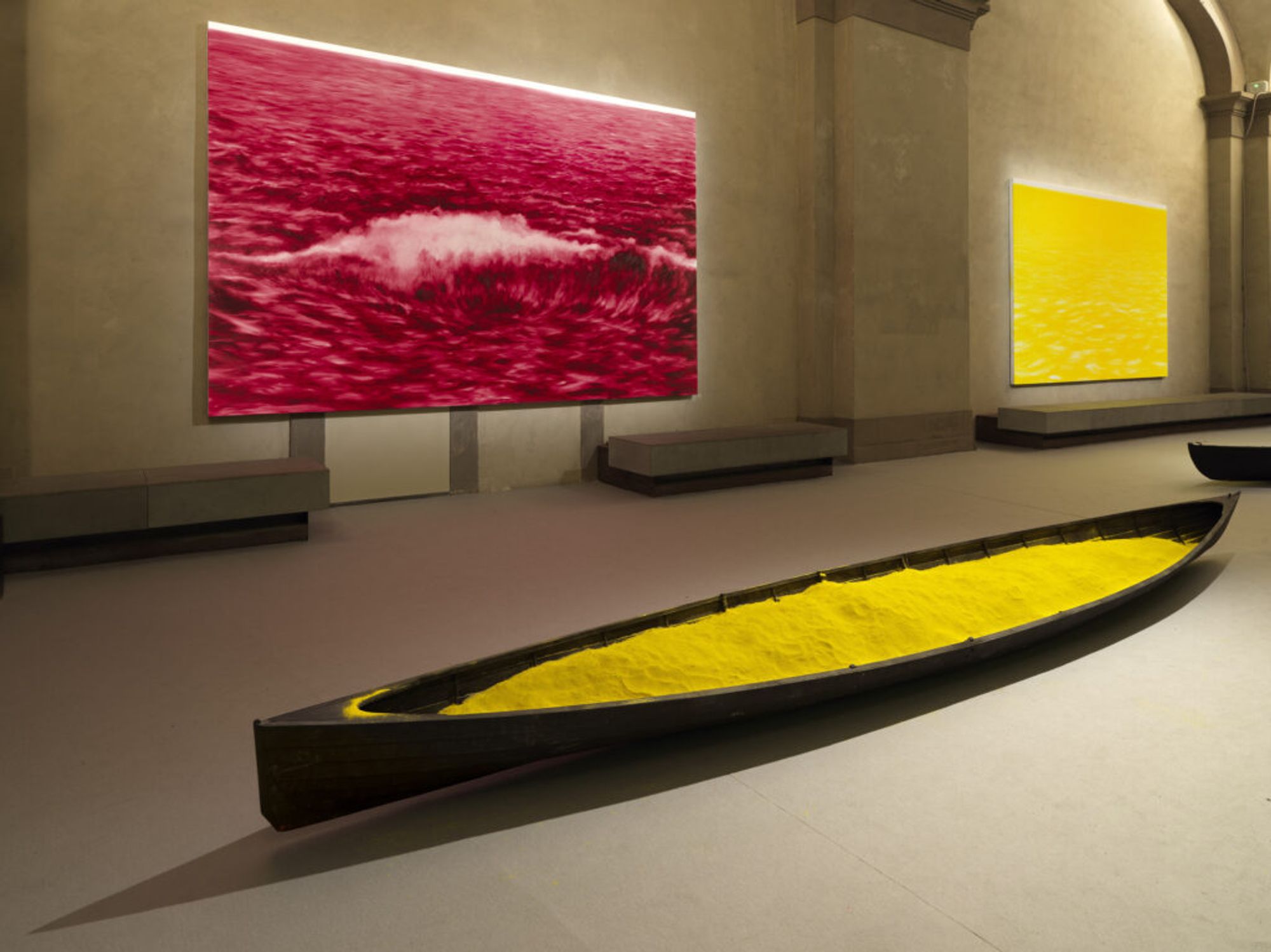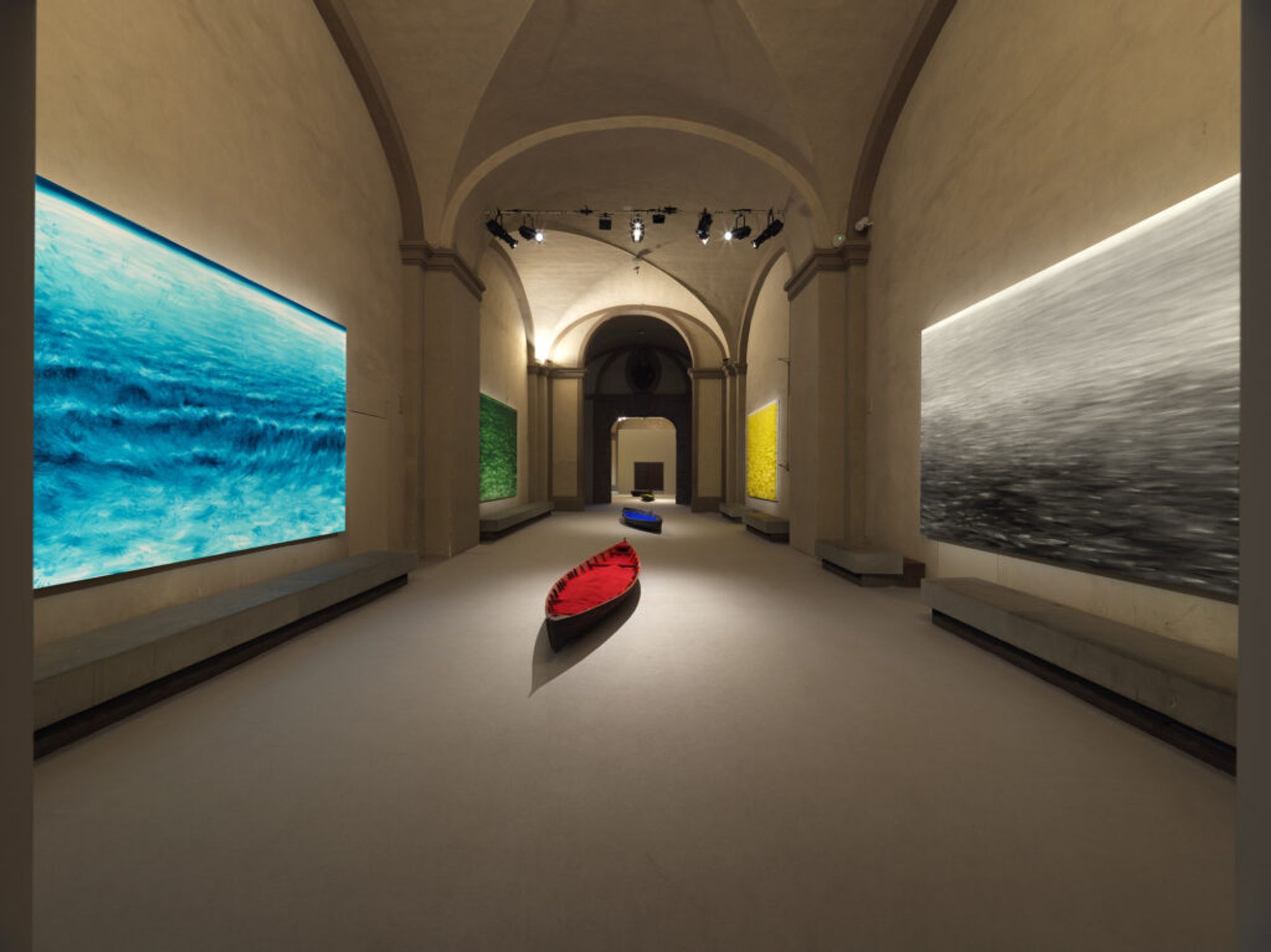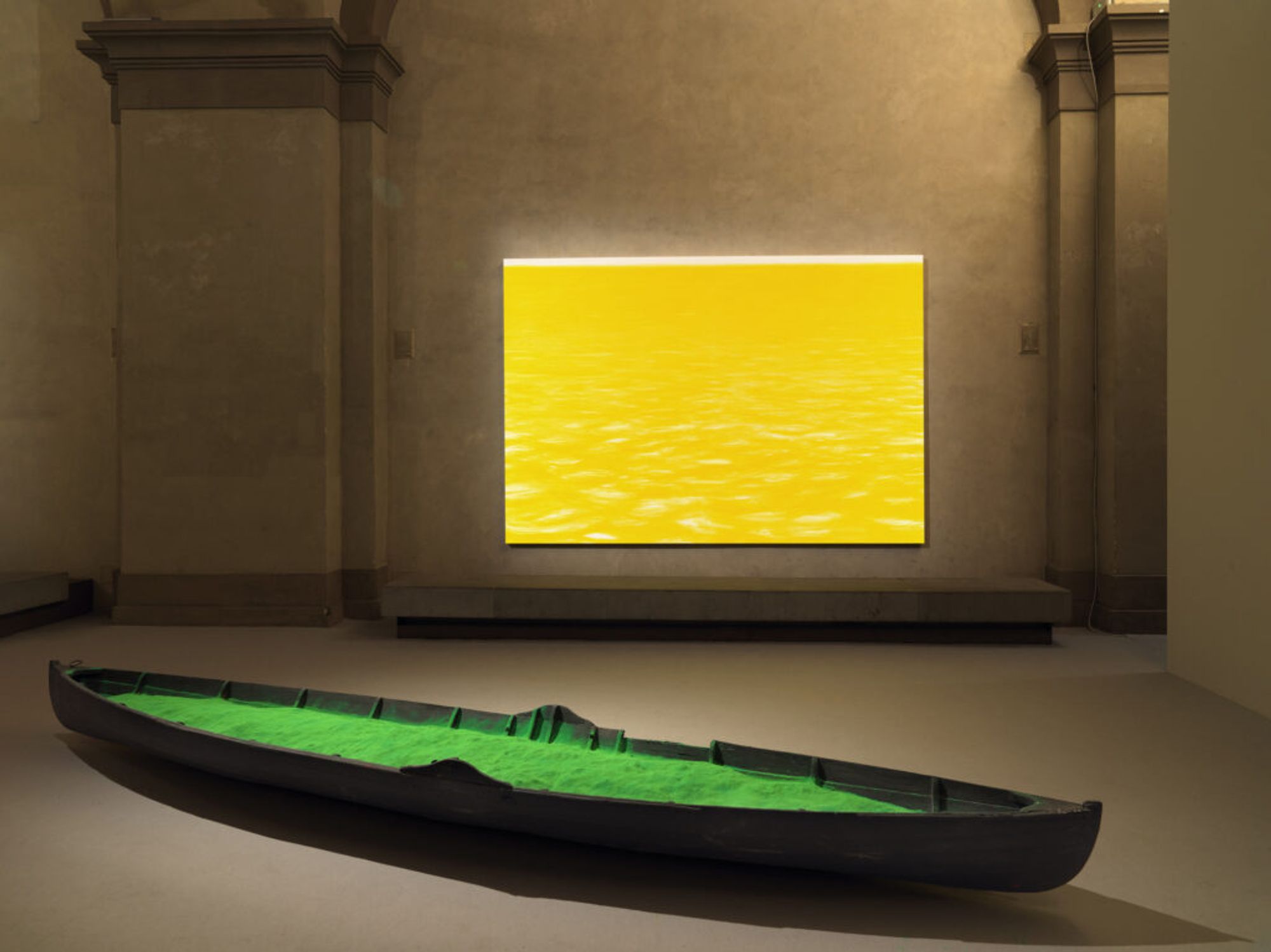In the Galleria delle Carrozze, four large boats – a strange and estranging twist of fate in the changing of hands from land vehicles to water crafts – glide towards a distant, unreachable destination; or perhaps they are drifting away from their point of departure, in the hope of landing in an unknown, virgin land to begin a new civilisation of art. Like memories of a journey, they are close to becoming shadows of themselves. They travel in stillness. Parmiggiani’s boats carry a special cargo, made of powders of different colours, miraculous and precious materials, the epitome of a glorious history: pure pigments, the inalienable substance of every pictorial apparition. Red, yellow, blue and green. “I do not have a nihilistic conception of life because I don’t even know what life is. I feel it is a great gift; the gift of being able to observe the world, to observe the eyes of my fellow human beings, the miracle of being able to walk this Earth” Claudio Parmiggiani.
On the walls there are large monochrome canvases of equal chromatic purity by Abel Herrero. A sea of luminous and acid green, a blinding and nervous yellow, a blue replete with nocturnal depth, a red like blood and Dionysian nectar, a black that – while concealing – reveals the origin of light. Large churning surfaces, a sea of colour, still waves riding one after the other, on top of each other, and facing us like colour-saturated walls. Herrero makes a contemporary re-appropriation of the classic subject of the seascape, here becoming a depiction of the human condition, “a landscape of mass society and the ideology of produce-consume-produce… A landscape of passive assimilation, of the endurance of the doctrine of alienation and the impossibility of having access to contemplation as an increasingly denied psychological category”.
With his installations, Parmiggiani advances towards the disappearance of the object, penetrating the immaterial world of the idea, to the boundaries of the absolute and unattainable, however entrusting to things the ‘incarnation’ of the divine into reality, the unveiling of the invisible in the world of things. A pair of worn shoes, a bell, a pile of books, the warmth of a statue, an old oil lamp, boats and pigments. The painting is possible only by entrusting beauty and truth to the objects, and the history and survival of painting to the colour pigments. As when the artist entrusts the real presence of things to shadow and smoke, the presence of past to memory. Likewise, Herrero accepts the challenge of abstraction without relinquishing the immanence of painting, the recognizable structure of the naturalistic vision, the only possible way for the painter to imagine the infinite and the unlimited, when everything now has become within reach and every form of life has been digitally consumed. Everything, even the origin of the universe. Every mystery, even that of light and its counterpart, darkness. As in Parmiggiani, in Herrero as well, the wonderment for the miracle of the gaze persists, which consists in the contemplative recognition of the real. The dizzying opening up of the infinite, both in the thing and in the work of art.
An intense dialogue where Parmiggiani’s work, as an installation but strongly based on pictorial narrative, undergoes a metamorphosis, thus transforming the horizontal plane of the four sculptures, rich in colour pigments, into a vertical catharsis made of large canvases saturated with pure colour, pure light.
A catalogue with texts by the curator and critical contributions by Andrea Cortellessa and Walter Guadagnini will be published in conjunction with the exhibition.








